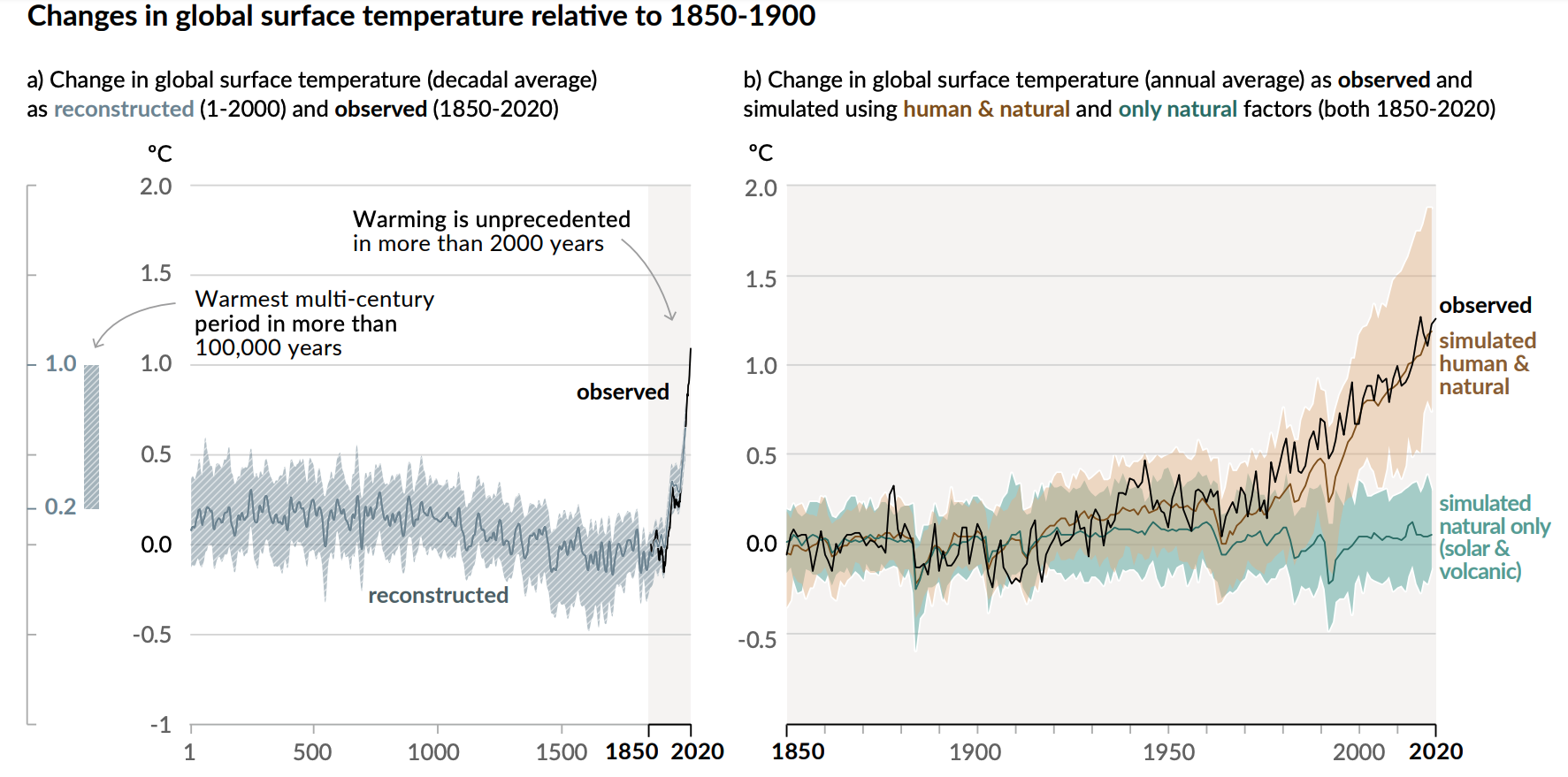- Fall 2022
The Road to Zero: Can we achieve zero emissions? And why we should.
For years, when you heard the word “climate,” you may have thought about a “climate controlled” lab or the “business climate” your organization is operating in. While this still may be the case, the word climate has taken on a new and important meaning in the infrastructure world over the last decade. Many now associate climate with weather, and that would be correct, albeit it’s the weather (precipitation, wind, etc.) over many years.
Evidence is clear that we’re affecting our climate through greenhouse gas emissions such as carbon dioxide, methane, and others. The Intergovernmental Panel on Climate Change (IPCC), the United Nations body responsible for assessing the science of climate change, released the Sixth Assessment Report in 2021. This report highlighted the impact that humans are having through greenhouse gas emissions on changing the temperature of the earth and shifting climate patterns. This is leading to more extreme temperatures and storms that affect our infrastructure and livelihoods.
Many paint a “doom and gloom” portrait of climate change, and there is some merit to that, but I view it as opportunity: opportunity to learn what’s working and not working, and an opportunity for a creative design challenge. We are in a tough spot, so what are we going to do about it?

Figure 1. Changes in global temperature relative to 1850-1900, as published in the IPCC WGI Report.
The left figure shows the change in global surface temperature and reconstructed temperature over the last 2,020 years and the right figure shows the difference between simulated natural (solar and volcanic) impact on temperature versus simulated human and natural influence (along with observed) from the years 1850-2020. While it is true that the earth’s climate changes in cycles, the rate at which it is changing in the last 50-100 years is much more rapid. This is attributed in large part due to well-mixed greenhouse gases.
Why should we care? We can’t ignore climate change, so let’s consider reasons we should care. For one, it’s the right thing to do. Lower greenhouse gas emissions and reduced energy use, among other indicators, leads to a healthier earth and a more equitable society, both of which are integral parts of our day-to-day lives. Like clean water and air? Me too. Like taking care of your neighbors? Me too. It’s simply good stewardship, just like what I learned wandering through, and wondering about, the mountains of North Carolina as a kid. Further, there is an opportunity for profit to be made. We will always need roads – at least until George Jetson’s world (universe?) becomes a reality. And while some would be surprised, those in our industry wouldn’t be - asphalt offers a lot.
The good news: We have a pathway to get there! The National Asphalt Pavement Association, through their Climate Stewardship Task Force, published “The Road Forward” in 2022. The Road Forward documents a vision for achieving net zero carbon emissions for the asphalt pavement industry with a goal of achieving net zero by 2050 (more information at www.asphaltpavement.org/climate).
What does “net zero” mean? It does not mean absolutely zero emissions – that is likely impossible to achieve. It does, however, mean getting as close as possible to zero emissions in our materials selection, transportation, production, construction, impact in the use-phase, and end of life, and then offsetting the rest through methods that uptake carbon from the atmosphere. The industry goals set forth by NAPA are as follows:
- Achieve net zero carbon emissions during asphalt production and construction by 2050.
In essence, the industry will work to understand and reduce the key drivers of emissions in asphalt production, on a net basis, and leverage existing or new emerging technologies such as warm mix asphalt and reclaimed asphalt pavement (or more efficient plants and equipment) in doing so. - Partner with customers to reduce emissions through pavement quality, durability, longevity, and efficiency standards by 2050.
The asphalt industry will work with owner agencies to identify ways that technologies, specifications, and methods can help reduce the carbon emissions of asphalt pavements in direct or indirect ways without compromising performance. - Develop a net zero materials supply chain by 2050.
To do so, the industry will need to work with materials suppliers and through methods such as balanced mix design to identify technologies and techniques that will achieve a net zero emissions supply chain. - Transition to electricity from renewable energy providers in support of net zero carbon electricity generation by 2050 and reduce electrical intensities.
It’s no secret that the power generation industry is working toward net zero, which is great news, because we use power to operate asphalt plants, equipment, offices and labs (not to mention our homes). By capitalizing on available power opportunities (i.e., purchasing “green energy” when it’s an option) and enhancing the efficiency of facilities, a move toward net zero emissions is achieved.
Moving toward net zero emissions will ultimately have an impact on our bottom line. There may be investments that have to be made, and change is incremental, but we, as engineers, producers, and materials suppliers need to step up to this design opportunity. We can make a difference for our environment, our neighbors, and make a profit (or save) along the way!

For more information on this article, please contact Ben Bowers.